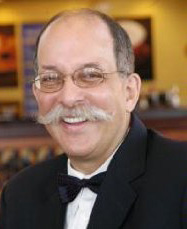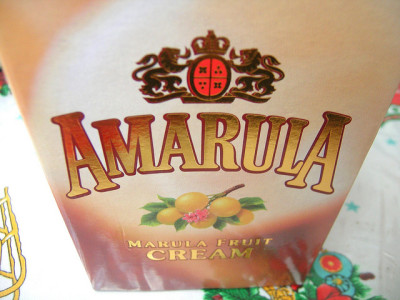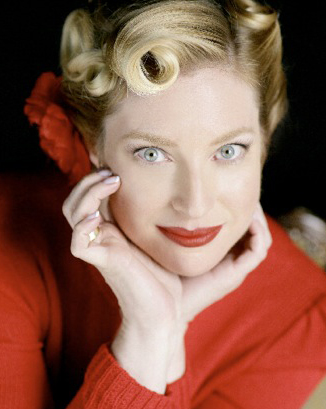
The Modern Butlers’ Journal volume 11, issue 1
International Institute of Modern Butlers
 Message from the Chairman
Message from the Chairman
As Downton Abbey continues into its next season, helping spread kind views of our profession, the world continues to teeter from one outrageous calamity or excess to another, but life for most of us continues pretty well as normal. Certainly, for the Institute, we had a very successful year and the next one promises to see us expanding into new realms. We hope your year, too, will see the desired next steps being achieved for you and yours.
Butlers in the Media
A good article on the development of luxury resorts in the Maldives.
Strange, the ideas people have of butlers: One hotel is advertising on Craig’s List for a “butler,” whose duties are those of a night bellman. In another advertisement, a gentleman is promoting himself as a “butler” who provides housesitting services.
Fascinating, the items of furniture on eBay that are either called “butler ____” or are connected with the profession—such as a butler’s bell pull or pulley.
This list is being extended on a regular basis as new items called “butler” are invented and forced by contorted logic and/or tired marketing to ride upon the coattails of the profession. Here’s another example.
 Let’s Talk about Spirits, Part 11
Let’s Talk about Spirits, Part 11
by Amer Vargas
Amarula Cream
Today, we travel to the beautiful country of South Africa to shed some light on the second-best-selling liqueur cream world-wide (Baileys being #1).

Amarula Cream is one of South Africa’s prides and there is a good reason for it: since its inception in 1989, this cream liqueur has multiplied its consumption and presence all over the world. Nowadays, while very popular in South Africa, of course, it is exported to more than a hundred countries, being especially popular in Brazil.

The main ingredient of Amarula is the marula fruit from the female marula tree. This exotic fruit grows only in the sub-equatorial plains of Africa and has a unique and delicious acidity and an interesting reputation: Marula has been recognized for centuries by many animals in the region for its powers of intoxication.

Many are the reports of animals becoming embarrassingly inebriated after eating the fruit—which has such a high sugar content that it ferments naturally in the sun, thereby producing alcohol.
From the end of January to March, the marula is hand-harvested. The fruit is crushed to separate the flesh and skin from the kernel, and then the skins are separated from the flesh. A “wine” is produced that is double distilled and aged in small oak casks for two years. The last step involves mixing the matured and distilled liquid with fresh cream.
Amarula, the Spirit of Africa, is commonly enjoyed on its own or “on the rocks,” but is also becoming increasingly popular as an ingredient in cocktails and even in some desserts.
Whichever presentation of Amarula you prefer, surround yourself with good friends and enjoy it while celebrating the beginning of this great 2015! Cheers!
Mr. Vargas is the Institute’s Vice President for Europe and can be contacted via AmerVargas at modernbutlers.com
Of Butlers and Roses, Part 9 of 20
by GJ dePillis
The language of flowers – Florigraphy
On a practical note, whether organizing a gala, a formal banquet, or a private party, it always helps to use checklists, including for the floral arrangements. Several checklists can be found online or in books, including the best-selling Butlers and Household Managers, 21st Century Professionals.

Moving beyond the prosaic, creating floral arrangements using blossoms and blooms from your employer’s garden where it is sufficiently substantial, always adds color and talking points. But talking of talking points, it is not widely known that there existed a whole lexicon associated with the giving and receiving of flowers during the late 1800’s—of which only the wealthy and their staff understood the meaning. For example, if a flower were given by a man to a lady for whom he harbored silent adoration, she would signal her response by the way she received it. If she touched the blossom to her lips, she was silently saying “Yes!” If she plucked off a petal and tossed it aside, she was saying, “No!” If someone was presented with a sprig of parsley, the message was “May you win at whatever you are engaged in.” If flowers were presented with ivy wrapped around the bouquet or cascading out of it, the message was “I desire”; in this case, the presenter of the bouquet was understood to be asking for permission to approach more intimately.
Even in this day and age, flowers are used for many occasions, and so have accumulated meanings or associations thereby: for example, do not give white flowers to a person of Chinese heritage, as the color white is associated with death/funerals in their culture; roses are considered to be romantic, etc.
Here are some more meanings associated with flowers, according to Flora’s Lexicon of 1839, some of which you no doubt will recognize:
- Ranunculus: “You are radiant with charms”
- Daffodil: “Chivalry and regard”
- Tulips: “Intense love” (derived from the tulip frenzy of the 1600’s that made men trade their worldly goods for certain tulip bulbs):

- Red tulips: “Declaration of love”
- Variegated (striped petals) tulips: “You have beautiful eyes”
- Tree tulips: “You will have fame and rural happiness”
- Crocus: “Cheerful mirth, pleasure of hope, and renewed gladness”
- Raspberry: “I apologize”
- Rose: “Beauty, and love”
- Coral rose: “I admire your accomplishments”
- Lavender rose: “My pure love is genuine and sincere”
- Pink rose: “You are graceful, gentle and lovely”
- Red rose: “I desire and love you”
- Red and white rose: “My happy heart is yours”
- White rose: “I am worthy of you” (sometimes used for bridal love and to express the bliss of being united after a waiting period of restraint)
- Yellow rose: “I am so pleased we are friends.”
Today, nobody is so introverted and super discreet as to semaphore their messages via florigraphy before opening their mouth, but we still do have certain flowers we use for certain occasions.
Until next time, have a wonderful time speaking the language of flowers.
Ms. dePillis is a freelance contributor to the Journal who is based on the West Coast of the United States. She can be reached via depillis at gmail.com
 Consulting the Silver Expert
Consulting the Silver Expert
by Jeffrey Herman
Q: What are the rough spots on my sterling that I can’t remove with silver polish?
A: Those black rough spots you feel on sterling (or other solid silver alloys) and can’t remove with silver polish is most likely corrosion. Place an ammonia-soaked cotton ball on the corrosion spot and it should be dissolved within 10 minutes. If not, do it again for ten minutes at a time until the corrosion is removed. You may need to use some silver polish on a Q-tip or cotton ball and “massage” the area very lightly until you bring up the shine to blend in with the surrounding area. There will probably be a shallow etched spot that remains under the corroded area.
Mr. Herman continues to offer his services to our readers for any questions you may have about the care of silver. Either call him at (800) 339-0417 (USA) or email jeff at hermansilver.com
The Institute is dedicated to raising service standards by broadly disseminating the mindset and skills of that time-honored, quintessential service provider, the British Butler, adapted to the needs of modern employers and guests in staffed homes, luxury hotels, resort, spas, retirement communities, jets, yachts, & cruise ships around the world.
